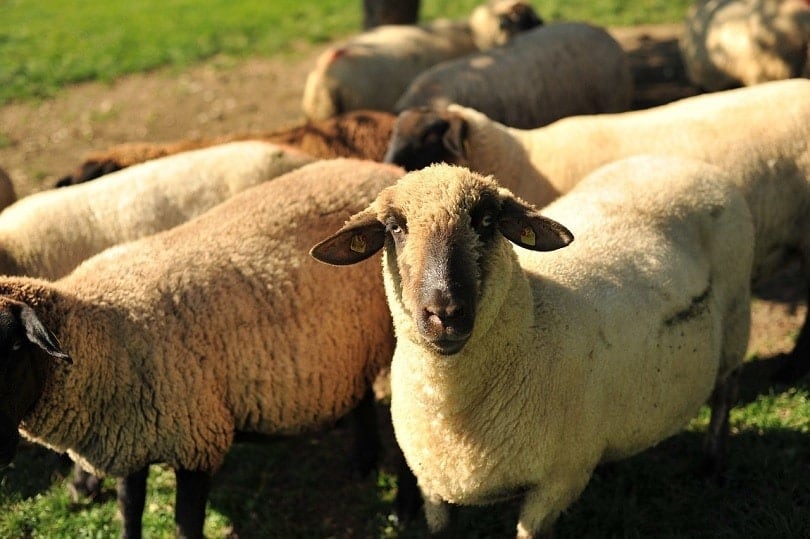There are hundreds of sheep breeds out there. Of course, some are more popular than others. Some are easy to get your hands on if you live in North America, others went extinct decades ago. Many are native to other areas and have not been imported to the United States in any large number. For this reason, it isn’t possible to get all the sheep breeds when living in North America.
In this article, we’re going to look at some of the most common sheep breeds in the United States. If you wanted to purchase a sheep from any of these breeds, it likely wouldn’t be too difficult to find someone willing to sell you one. These sheep are used for a variety of purposes, from meat to wool.
The 12 Popular Types of Sheep
1. Merino Wool Sheep

This is technically a general breed, not a specific breed. However, most of these sheep are pretty similar and are all used for the same thing – high-quality wool. These sheep produce some of the best wool of any sheep, which is why they’ve spread as far as Australia, South Africa, South America, and the United States. These sheep account for nearly 50% of the world’s sheep population. They are extremely popular.
Their fine wool does well in arid and semi-arid regions. They have a very strong flock instinct, which makes them easier to take care of. They are very productive and produce a lot of wool. They are adaptable to different environments, hence why they have spread throughout the world. They are also excellent foragers, so you don’t have to worry about their food all that much. They have a pretty long lifespan as well and stay productive throughout their lives.
Their wool is delicate and soft. It is usually considered very high-quality. Most of the world’s wool comes from these sheep. The wool is used often for performance athletic clothing.
The word “merino” comes from Spain, where the sheep was introduced in the 12th century. It has spread throughout the world since then. The American Rambouillet is one of the most common breeds of Merino sheep in the United States.
2. Rambouillet Sheep

This is a specific breed of Merino sheep. However, it is widespread. It is probably one of the most common commercial sheep out there. For this reason, it deserves its own category. It is the Merino sheep on steroids when it comes to popularity. Practically every sheep you see in the states is likely to be a Rambouillet sheep.
These sheep are the foundation stock of most sheep in the United States. They are also called the French Merino, as they are descended from the original Spanish Merino sheep. However, they were also crossed with the French Rambouillet, which is a common sheep in France. This crossbreeding program dates back to the 1800s, so this particular breed has been around for a while.
Despite their name, it was actually Germany that popularized and bred this breed to be what it is today. They are a bit larger than the original Spanish merino, which also means that they produce more wool. They are also a bit sturdier, which is due to their larger size as well.
The breed was imported into the United States early in its development and the U.S. Rambouillet breed association was formed in 1889. They will work on the standards for this breed and support this breed’s high-quality breeding.
Despite being large, these sheep still have their strong flocking instinct. They are long-lived as well and produce high-quality wool for the large majority of their life. They can be used for meat as well as wool, since they are more significant than most wool sheep. This made them very popular in America, where dual-purpose animals seem to make it further than niche animals.
3. Suffolk Sheep
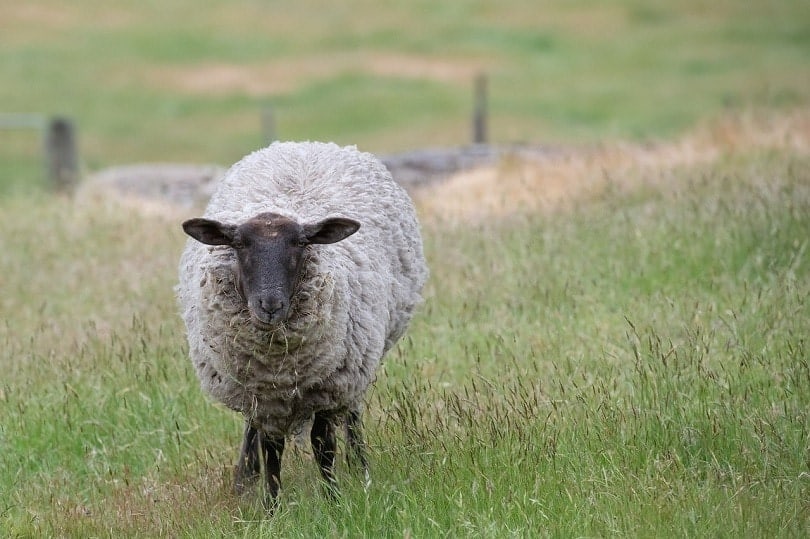
This is one of the most popular mutton sheep in the United States. It has medium-length wool, but is usually not sheared. Instead, it is used almost exclusively for meat.
This breed is most distinguished by its black legs and head. You can almost instantly tell if a sheep is a Suffolk sheep based on the coloration on its head and legs.
This breed is prevalent, especially in the United States. Almost all meat sheep belong to this breed. This sheep makes up more than 50% of the purebred sheep registries. It was initially the result of Southdown rams and Norfolk horn ewes crossbreeding over 200 years ago in southeastern England. However, they have been a breed for so long that their standards are set in stone.
They are a fast-growing breed that gets quite large. They produce heavy, high-quality meat. These two traits are mainly why they are so popular. They were introduced to the United States in 1888 and have been popular ever since.
4. Hampshire Sheep

The Hampshire Sheep is a dual-purpose breed. They produce fine quality wool and excellent meat, and they do both jobs exceptionally well. Like the Suffolk sheep, they also have black legs and faces, which makes them decently distinguishable.
These sheep grow fast, allowing them to produce high-quality meat rather quickly. They are active foragers and are very calm sheep. These traits make them reasonably easy to take care of.
Like most breeds we’ve read about thus far, this breed initially came about in the 1800s. It was breed by crossing Southdowns to the Hampshire Downs of the U.K. It became popular in the United States shortly after it was bred.
5. Katahdin Sheep
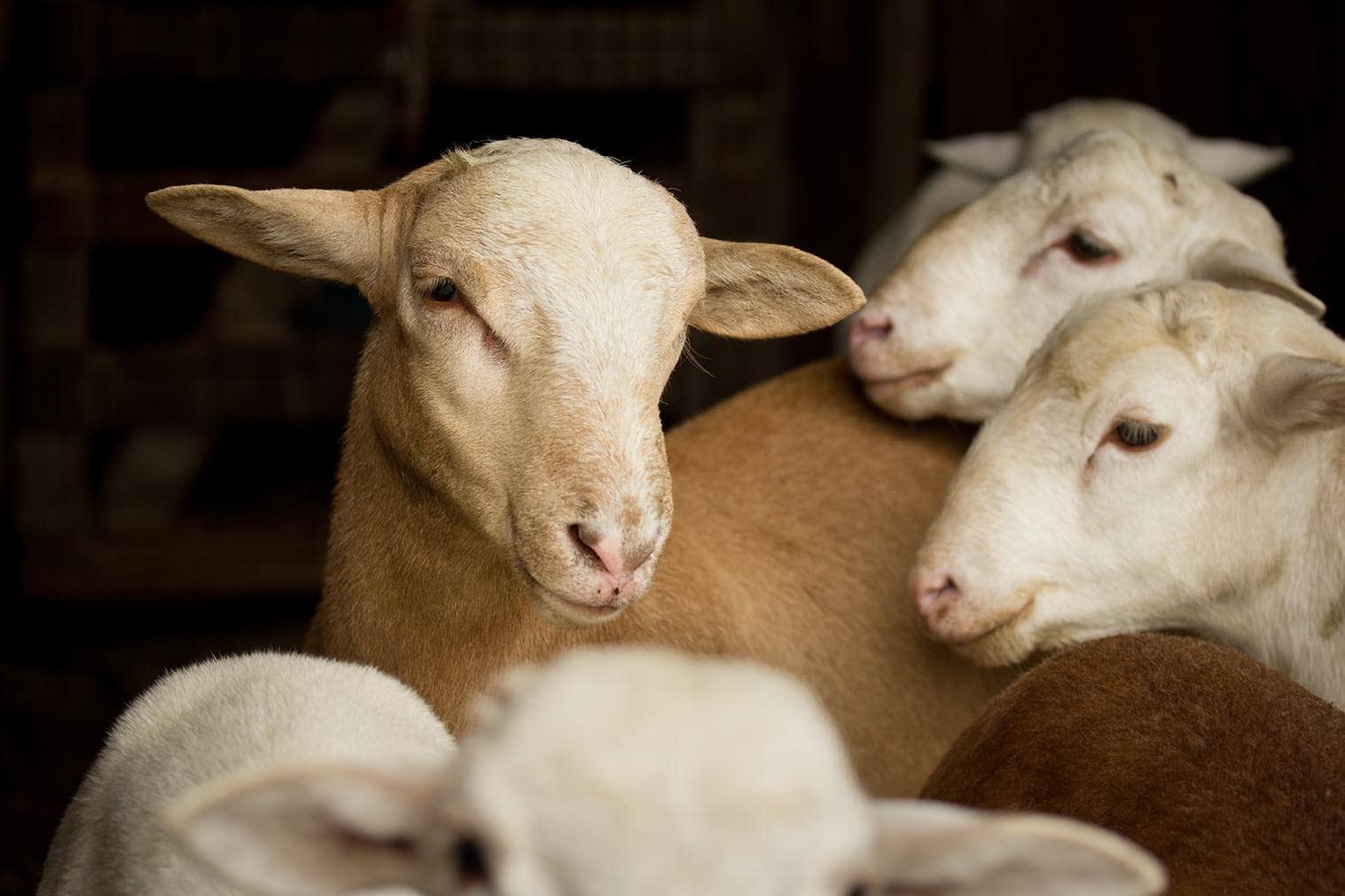
This sheep is a hair sheep that is mostly bred for meat. It was developed in the U.S. in the 1950s, making it one of the newest popular breeds around. They are named after the area where they were first bred, Mt. Katahdin in Maine. They were crossed by an amateur geneticist who was trying to make a mutton-type sheep that was easier to take care of – and he succeeded.
This sheep needs very little care. It requires very little maintenance and is resistant to most weather. They were bred in Maine, after all. They are naturally resistant to parasites, so that is one less thing farmers have to worry about. You don’t even need to shear them, as they shed their winter coat. This also makes them more suitable to warm environments, since they’ll just shed their coat when necessary.
They are medium-sized and ideal for pasture lambing. They are great at foraging and take care of the majority of their own needs.
6. Dorper Sheep
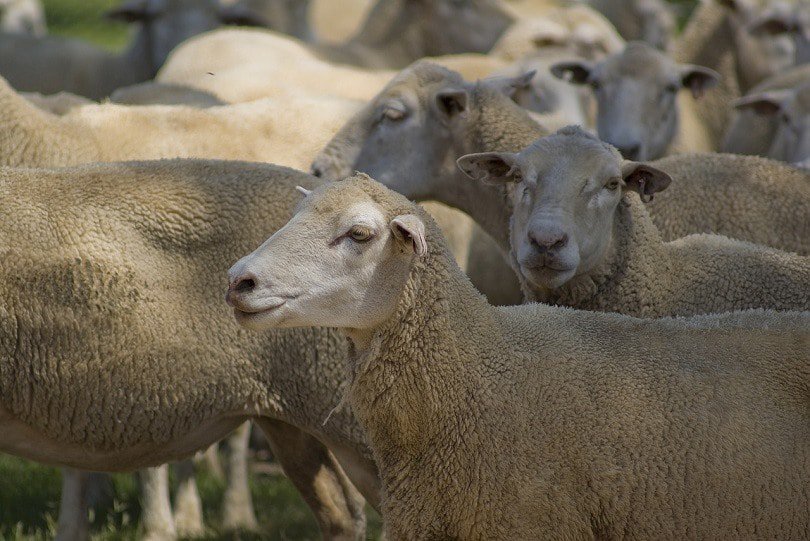
The Dorper sheep are incredibly hardy. They are most popular in South Africa, but you can find them in America as well. They are best in arid conditions, which is where they originated from. However, they are highly adaptable and can get used to nearly any environment. Their popularity began to take off in the United States in 1995, so they are not extremely widespread as of yet.
Their coat is both wool and hair. It will drop off when being sheared, which makes them a bit easier to take care of. They are mostly bred as mutton-sheep.
They are chiefly prized for their sheepskin, which is extremely thick and protective from harsh weather. This skin has been named “Cape Clovers”, which it is still marketed under today. In fact, a lot of the sheep’s carcass value comes from their famous sheepskin, not necessarily their meat. However, they still produce high-quality meat – but their sheepskin is worth more.
7. Dorset Sheep
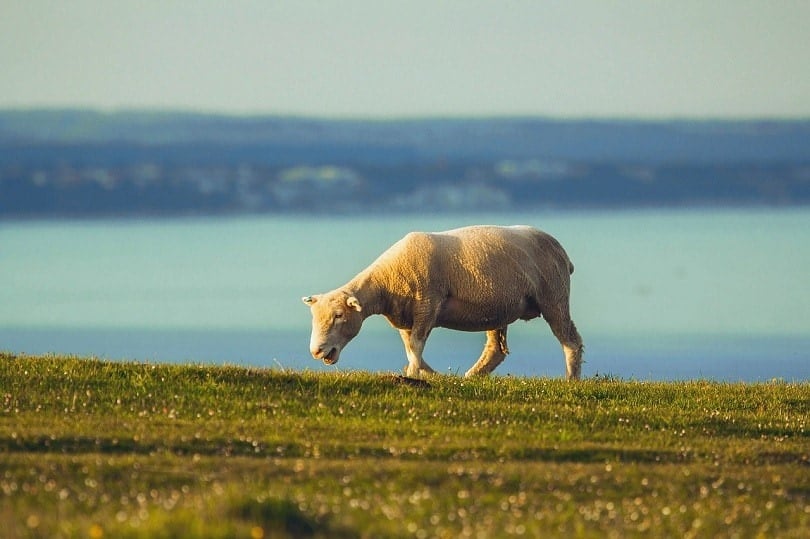
The Dorset sheep is bred for meat. It has medium-length wool and is most well-known for its prolific lambing. Most Dorset sheep in the United States are the Polled Dorset, which is a particular type. They are prolific breeders and milkers, which they are sometimes used for exclusively. However, they are mostly prized for their high-quality meat production.
This breed originated in Salem, Oregon, in 1860. However, Polled Dorset originated in Raleigh, North Carolina.
This breed is second to only the Suffolk breed in the United States in terms of popularity. They are the most popular white-faced breed in the United States as well. If you see a white-faced sheep, it is probably a Dorset.
8. Southdown Sheep
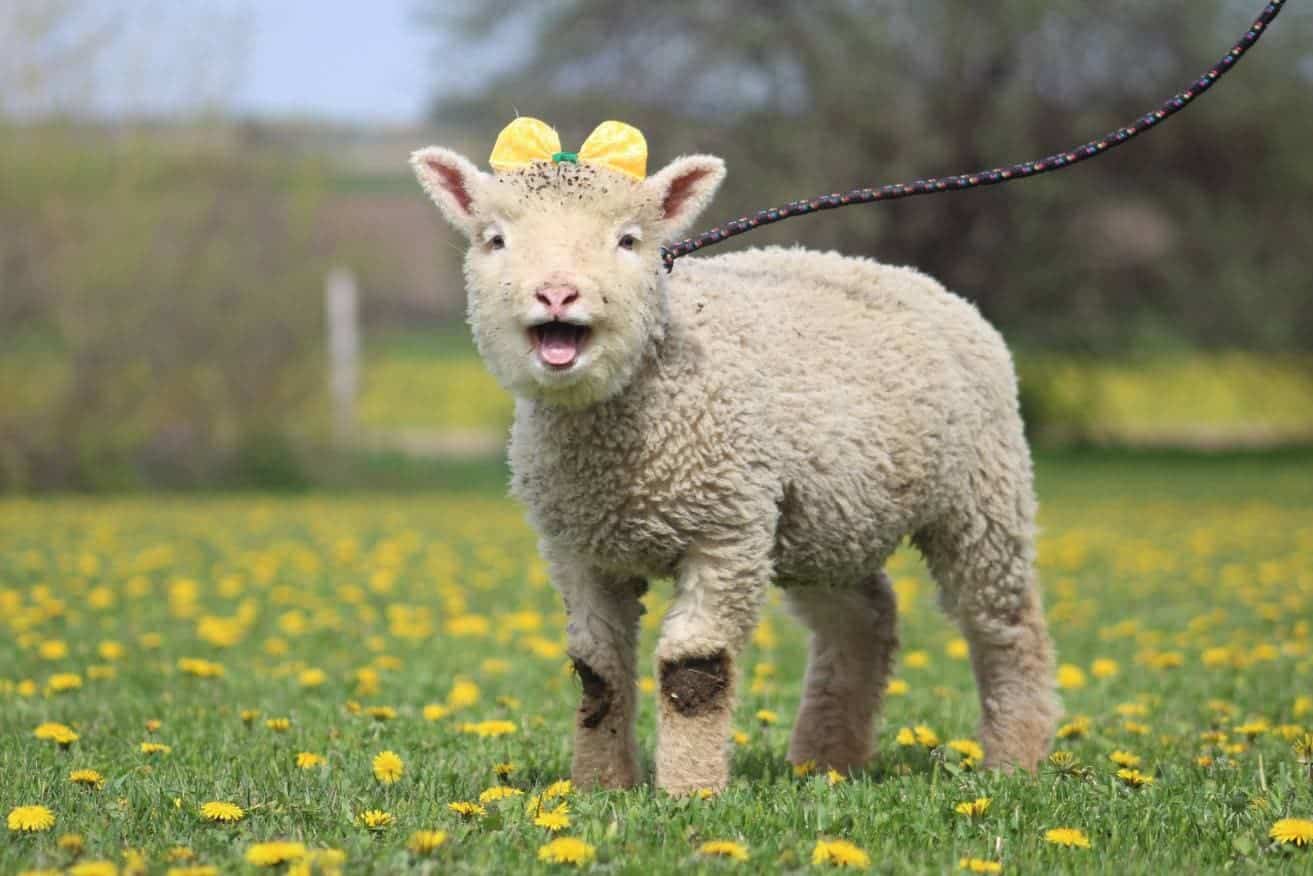
If you’ve read thus far, you’ll know that this sheep was crossbred to produce most of the famous sheep breeds in the United States today. Despite most of its descendent breeds exceeding the Southdown in popularity, this breed is still somewhat popular in the States today. They are dual-purpose sheep that produce medium wool and high-quality meat.
They have contributed genes to the Suffolk, Hampshire, and Oxford breeds, which are all relatively popular today. They originated from southeastern England and are one of the oldest sheep breeds in the world. They were in Connecticut as far back as 1648.
The breed is medium-sized and has a grey-ish face and legs. These sheep are useful for grazing weeds in vineyards, as they are too short to reach the actual grapes. They are sometimes employed for this purpose.
9. Karakul Sheep

This is possibly the oldest domesticated sheep in the world. We know they date back to at least 1400 B.C.E. in Persia. However, they likely go back even further than that. That’s when we have the first record of them.
They are “fat-tailed sheep”, which means they taste a bit different than most sheep. They are used mostly for mutton and are one of the most popular fat-tailed sheep around today. They are mostly found in the arid regions of Africa, the Middle East, and Asia. However, you can find them in the United States as well.
They were first introduced in the U.S. in the early 20th century, where they were mostly used for their pelt production. They currently fit a particular niche in the fiber arts industry. Their fleece has a shallow grease content and is easily spun. It makes perfect carpet yarn. Their wool is where the art of felting came from, and much of their wool is still used for felting today. Small herds are kept throughout the United States for this reason.
10. Lincoln Sheep
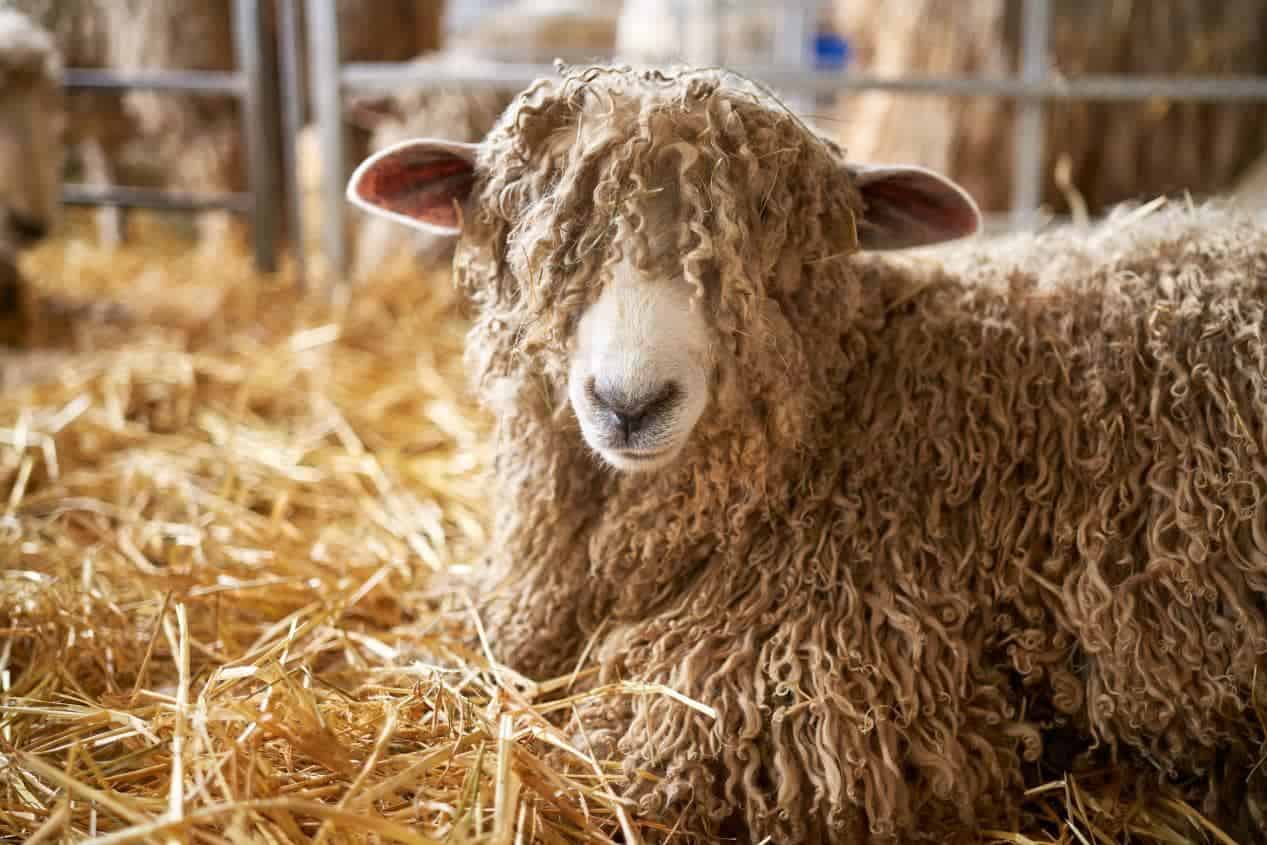
This sheep was brought from England to the United States in the 18th century. It is known as the world’s largest sheep breed, with mature rams weighing anywhere from 250 to 350 pounds. They have long wool that is very high-quality. Their fleece is in high-demand for spinning and weaving crafts.
They have the heaviest and coarsest fleece of all long-wooled sheep. This is one of the primary reasons for their popularity; they fit in a very specific niche. You can’t get similar wool from any other sheep breed.
11. Icelandic Sheep
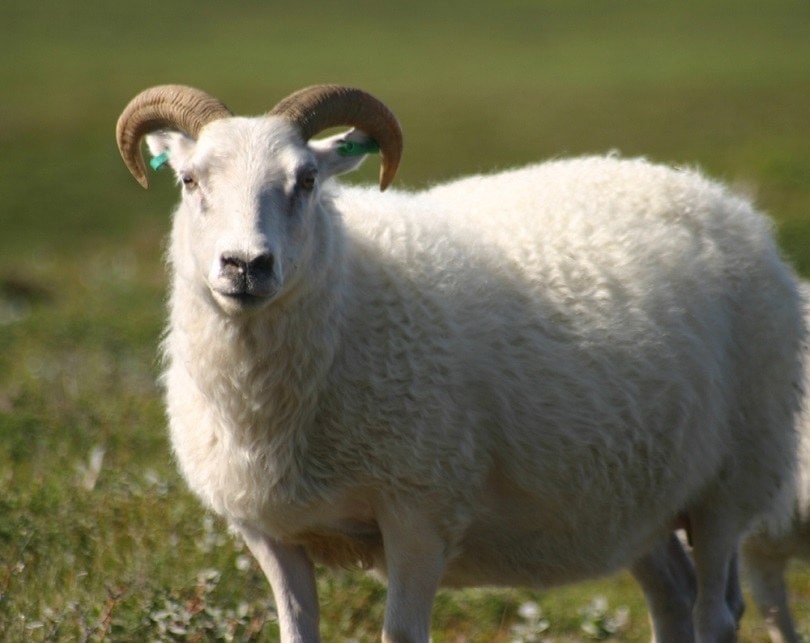
The Icelandic sheep comes from Iceland, as you might guess. It is a heritage breed that isn’t popular. However, it is gaining in numbers as farmers move back towards heritage breeds. They are not as calm and tame as some other breeds. However, they can be raised for fiber, meat, and milk. They’re very versatile and hardy.
They are double-coated, which protects them from extreme environments. Their wool is considered low-quality and is usually used for rugs. They are quite prolific in Northern Europe, but they were not introduced into North American until 1985.
They are efficient herbivores, as they are used in a relatively harsh environment. They are also protected under Icelandic law, where it is illegal to import other sheep.

This is the oldest breed in the United States. Most of these animals are located in New Mexico today. They were imported to North America in the 16th century, where they were used to feed the Spanish armies. They are hardy and adaptable, as well as intelligent.
They have delicate meat and a double-coat. Their wool is low-quality, but it is used in some weaving crafts. They have become an essential part of Navajo culture, providing meat, milk, hide, horns, and wool. The U.S. government nearly exterminated them in the 1860s and again in the 1930s, where their numbers were lowered to about 800 animals.
Luckily, they are making a comeback today. A breeding program in 1978 gathered the survivors and started helping the breed come back from the brink. Today they are scarce but not considered endangered.
Featured Image Credit: s-ms_1989, Pixabay
